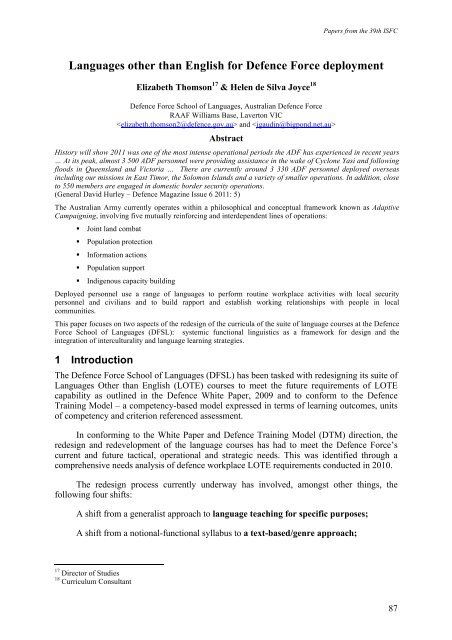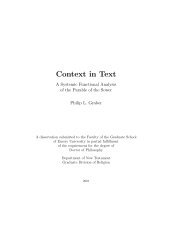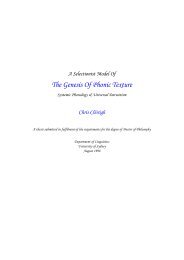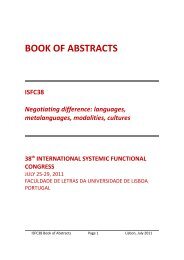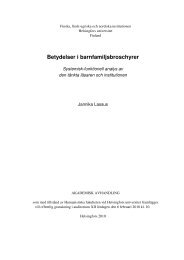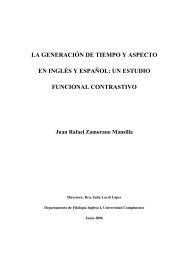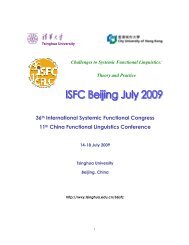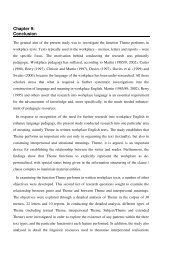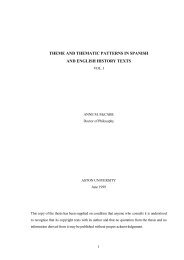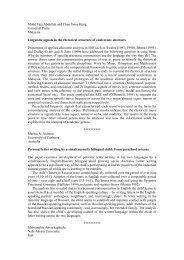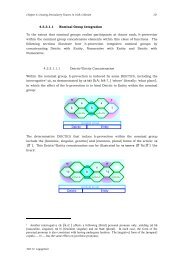the ISFC39 Proceedings - International Systemic-Functional ...
the ISFC39 Proceedings - International Systemic-Functional ...
the ISFC39 Proceedings - International Systemic-Functional ...
You also want an ePaper? Increase the reach of your titles
YUMPU automatically turns print PDFs into web optimized ePapers that Google loves.
Papers from <strong>the</strong> 39th ISFCLanguages o<strong>the</strong>r than English for Defence Force deploymentElizabeth Thomson 17 & Helen de Silva Joyce 18Defence Force School of Languages, Australian Defence ForceRAAF Williams Base, Laverton VIC and AbstractHistory will show 2011 was one of <strong>the</strong> most intense operational periods <strong>the</strong> ADF has experienced in recent years… At its peak, almost 3 500 ADF personnel were providing assistance in <strong>the</strong> wake of Cyclone Yasi and followingfloods in Queensland and Victoria … There are currently around 3 330 ADF personnel deployed overseasincluding our missions in East Timor, <strong>the</strong> Solomon Islands and a variety of smaller operations. In addition, closeto 550 members are engaged in domestic border security operations.(General David Hurley – Defence Magazine Issue 6 2011: 5)The Australian Army currently operates within a philosophical and conceptual framework known as AdaptiveCampaigning, involving five mutually reinforcing and interdependent lines of operations:§ Joint land combat§ Population protection§ Information actions§ Population support§ Indigenous capacity buildingDeployed personnel use a range of languages to perform routine workplace activities with local securitypersonnel and civilians and to build rapport and establish working relationships with people in localcommunities.This paper focuses on two aspects of <strong>the</strong> redesign of <strong>the</strong> curricula of <strong>the</strong> suite of language courses at <strong>the</strong> DefenceForce School of Languages (DFSL): systemic functional linguistics as a framework for design and <strong>the</strong>integration of interculturality and language learning strategies.1 IntroductionThe Defence Force School of Languages (DFSL) has been tasked with redesigning its suite ofLanguages O<strong>the</strong>r than English (LOTE) courses to meet <strong>the</strong> future requirements of LOTEcapability as outlined in <strong>the</strong> Defence White Paper, 2009 and to conform to <strong>the</strong> DefenceTraining Model – a competency-based model expressed in terms of learning outcomes, unitsof competency and criterion referenced assessment.In conforming to <strong>the</strong> White Paper and Defence Training Model (DTM) direction, <strong>the</strong>redesign and redevelopment of <strong>the</strong> language courses has had to meet <strong>the</strong> Defence Force’scurrent and future tactical, operational and strategic needs. This was identified through acomprehensive needs analysis of defence workplace LOTE requirements conducted in 2010.The redesign process currently underway has involved, amongst o<strong>the</strong>r things, <strong>the</strong>following four shifts:A shift from a generalist approach to language teaching for specific purposes;A shift from a notional-functional syllabus to a text-based/genre approach;17 Director of Studies18 Curriculum Consultant87


